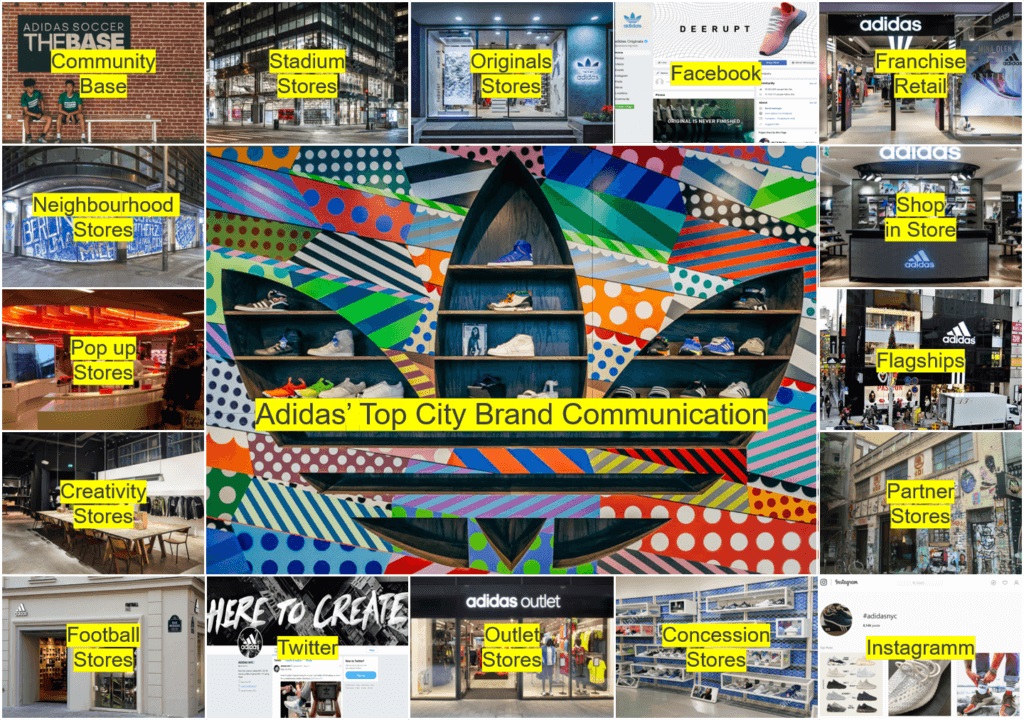Adidas: A Legacy of Performance and Innovation
ound employing the best athletes, maximizing results both on and off the field. From the very beginning, the distinctive character of the company has relied primarily on a global creative perspective and passion for sports of Olympiads in every dimension.
1. Storytelling as a Part of Brand Strategy

Adidas took up the practice of using stories, presenting their marketing communications as a kind of performance constructed to captivate the audience and invite them to participate. The Adizero Prime & Adizero Baricline as presented are classic uncluttered shoes that highlight the brand’s approach and ideology of taking as little material as possible and still remain fashionable.
As the competition increasedover time, so did the number and type of different products that the company could manufacture and sell. Market strategies have changed over time and the business has continued to expand owing to performance management.
2. Philosophy Based on Consumer’s Satisfaction

Adidas does not forget the primary reason of the business operation, which is to satisfy the consumers. heir approach to product development is to tackle a wide spectrum of markets, ranging from professional sportsmen to amateurs. Adidas understands the market well, whether it is a football player like Lionel Essi or someone who simply enjoys jogging; there are different designs made for various use levels.
Products are not only used for sports, hence, Adidas frequently works with sportsmen, fashion designers and other representatives of pop-culture. This actually enables Adidas to be at the edge of the trends and bring products that are relevant whether to the streets or the most prestigious sporting events.
3. Leading Edge in the Sports Industry

Adidas made itself the most active participant in most important market segments especially in portswear oriented to football, basketball and running. The brand enjoys long-term relationships with some of the world’s largest clubs like Manchester United and Real Madrid and with such sports stars as Paul Pogba and James Harden. These ties contribute to the perception of Adidas as a credible and visible player in global sports.
Adidas also pushes the boundaries of sports to include lifestyle aspects. For example, the so-called street fusion receives designs from many artists and designers such as Pharrell Williams and Kanye West. This strategy places the company further into the fashion world, further broadening its target market, and resonating within the culture of every day.
4. The Importance of Sustainability

One of the factors driving this evolution is a concrete concern for taken in the ears of Adidas firmly that increasingly consumers as well as the nature are in need of manufactured goods that do not degrade the environment. Accordingly, the Brand took steps to eliminate this aspect of human activity, notably the joint initiative with Parley for the Oceans that turns ocean trash into breathable activewear.
Using recycled materials is not the only way to enforce adidas’ sustainability policy. To begin with, using innovations such as the Parley Ocean Plastic to create high-performance yarn called Primeblue, or the related Futurecraft Loop. These kinds of initiatives are, however, in essence, more than being in line with current consumer trends in sustainable products; they also lead the industry onward.
5. Transformation digitais e personalização

No caso específico da Adidas, a transformação digital foi posta em pratica para modernizar a interação com o consumidor. Utilizando dados e tecnologia, Adidas allows the consumer to customize their shopping not only on the website and mobile apps, but also with digital devices in stores.
The Adidas app, for instance, makes good use of product recommendations and offers relevant suggestions to the users so as to encourage their engagement – based on available user information and purchase history. The increase of DTC sales has offered Adidas the ability to strengthen the relationships with the customers by providing them with unique products, some content personalized just for them and shopping experiences without interruptions and in various devices.
6. Product strategy: focused product strategy: less is more

For most of its history, the company has taken a focused approach to its product mix, focusing on key franchises such as the UltraBoost, NMD and Superstar lines. The brand’s excess in some regions is spotted in the categories the company is involved in as it tends to stretch its resources in pursuing too many operations.
Considerable analysis of this strategy shows that it is very ideal for Adidas as it helps the core products to be perfected, spending serious funds on their promotion and production by modernizing them, thus always making them attractive. It also aids in ensuring that there is clear positioning of products making the brand focus on specific groups of consumers.
Conclusion: The Future of Sport and Culture With Recap On Social Responsibility
As part of its robust strategy for products, performance and sustainability, Adidas aimed to change the way sport, fashion, and ecology interact through design. Owing to the fact that the company is more consumer-centrically oriented, which is promoted by the idea of sustainability and digital change, Adidas is becoming more innovative in the sportswear market. Known for their proclivity towards the future, there is one thing we can be rest assured about Adidas: the company will continue making innovations in the interface of sport, culture and technology.


